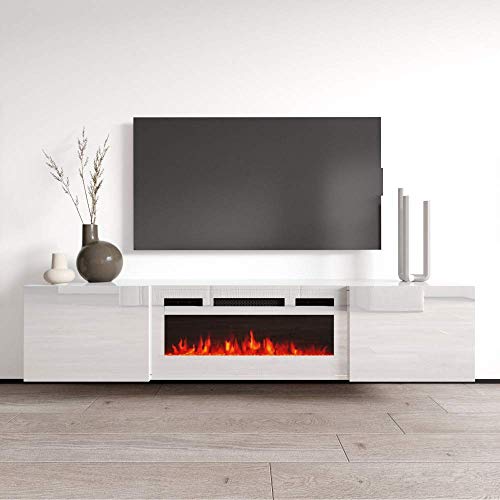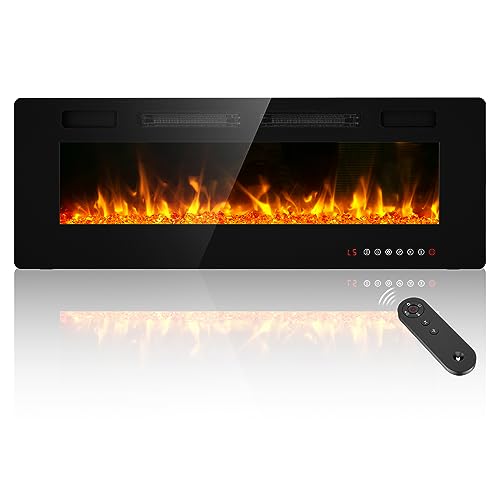A Look Into The Future How Will The Electric Fire Industry Look Like I…
페이지 정보
작성자 Tyrell 작성일23-12-13 16:40 조회8회 댓글0건관련링크
본문
 Electrical Fire Hazards
Electrical Fire Hazards Electrical fires are the source of many home and commercial property losses. These fires can be ignited quickly if the wiring that runs behind walls is damaged or worn.
Electrical fires are the source of many home and commercial property losses. These fires can be ignited quickly if the wiring that runs behind walls is damaged or worn.If possible, unplug the device that is causing the fire. If the flames aren't too large you can put them under the control of baking soda (a common ingredient in any fire extinguisher class C).
Installation flexibility
Electrical fires don't require a chimney, which means they can be installed almost anywhere in a room. They're also 100 percent efficient at the point of use, and convert the electricity that powers them into heat to warm your home. This is an environmentally friendly alternative to open fires that often lose heat through their chimneys.
In addition, electric fireplaces uk fires don't produce any gases or smoke, which means they are more eco-friendly than traditional fireplaces. They are also much safer than open flames because they don't release harmful toxins, and they don't burn logs. This makes them a safe choice for homes with young pets and children.
electric mounted fireplace fires can be installed in a variety of ways according to their style. In the majority of instances, you don't need to knock down walls or undertake any major remodeling. Many of them can be mounted on a wall and connected to create a perfect space for smaller areas in which floor space is at the limit.
Sparks or overheating can cause electrical fires. Sparks are caused when the electricity is obstructed and does not have a clear path. Overheating occurs when electrical current gets too hot and begins to melt wires and plastic.
As with all electrical fires, it's important to follow the wattage guidelines for lighting fixtures, lamps and bulbs. Bulbs with too much power can strain a socket and cause it to overheat, which could cause a fire. The material of cloth or paper can also catch fire if left on light fixtures.
Security is a key consideration in commercial buildings, where fire-protected electrical installations assist in ensuring that essential emergency systems continue to function in the event of a fire and even after. This includes alarms, lighting, ventilation systems and lifts that can be used to evacuate people, and also aid the fire-fighting effort. It is essential to regularly inspect these devices to ensure they're still working properly. The Limbecker Platz shopping mall in Essen, Germany, is a good example of a fire-protected electrical installation that is in compliance with these standards.
The output of heat
Electric fires can be used throughout the year, with heat settings available to suit your needs. They produce more heat than wood-burning or gas fires but don't need to have a chimney or flue. Some models can generate heat similar to wood-burning fireplaces, so you can make use of them as the primary source of heating in your room.
There are several reasons why electrical fires can occur, ranging from damaged wiring to overheated appliances. These issues can lead to arcing, which in turn could ignite nearby materials and cause the possibility of a fire. Be aware of the warning signs and take action if you see them. It is recommended to contact an electrician when you notice that your electrical cords are becoming hot or if your circuit breakers are constantly going off.
Electrical fires are more hazardous than normal fires. Smoke alarms must be in good working order and everyone should know what to do in the event of a fire. First and foremost, make sure everyone escapes the house, and that they're not trapped in any rooms. Also, make sure everyone knows where to meet outside, so that they can all be accountable after they have left the home. It is essential to turn off the power at the breaker and not attempt to extinguish the flame with water. Water is a natural conductor of electricity. Dumping water on an open flame can cause serious injury or death.
What is an electrical fire?
An electrical fire is a type of fire that is caused by malfunctioning or overheating wiring or electrical equipment. These fires are dangerous because they can quickly spread which can cause serious injuries and damage to property. They also cause more deaths than other kinds of fires, like ones caused by cooking or heating equipment.
Electrical fires can be triggered by malfunctioning extension cords, plugs and lighting fixtures. In winter, when freestanding electric stove fire heaters are in use they are more likely to happen. Many electrical fires are also caused by overloaded circuits as well as old electrical panels. In addition rodents and other insects can gnaw at wires and cause them to spark. In most instances, electrical fires can be averted by ensuring that all electrical appliances and light fixtures are properly plugged in and kept away from easily flammable material.
Safety
Electric fires usually happen when cords or wiring are overheated. They are more dangerous than any other kind of fire as they often begin behind walls or attics where the occupants don't have an easy escape. It's important to be proactive and recognize electrical fire hazards, even in commercial or industrial environments, where fires are not so common as they are in homes.
Electrical fires can be more difficult to put out than other fires, and they are particularly dangerous because they can spread rapidly through the air in a building and cause deadly carbon monoxide poisoning before anyone is able to leave. That's why it is important to educate all occupants about what to do in the event of a fire in the electrical system.
The most frequent fire risks include:
Overloaded outlets and power strip, especially in temporary installations or locations where they might not be noticed as quickly. Cords that are charred or frayed, or plugs. Lighting fixtures that use bulbs with wattages higher than recommended.
The NFPA estimates that electrical malfunction were responsible for 7.5 percent of the home fires that occurred in 2019. These electrical fires could be more difficult to spot than others because they're typically in walls or attics, where people aren't able to see them until it's too late.
Check that all electrical equipment is in good working in good condition, including switchboards as well as breakers. Look for indications of overheating, such as a smell of burning plastic, sparks, or melted wires. Check that each circuit breakers and disconnecting switches have clear labels and that there is sufficient space around them to allow for maintenance. It is essential to inspect these areas as part of daily safety practices and schedule regular visits from lone workers to keep up with the task. Keep corridors and stairwells clear of obstructions that could hinder or slow evacuation in the case of an emergency. All occupants should be informed of evacuation routes and a meeting place outside the building.
Maintenance
Electrical fires occur more often than you would imagine in private structures such as offices and homes. They usually originate from circuit breakers, electrical wires, and electrical components. Electrical fires can result from overloading systems, short circuits and improper maintenance. Regular maintenance involves cleaning the cords and checking for frayed or faulty wiring.
Overloading a circuit happens when too many electric appliances are connected to one outlet. This causes electrons to flow through the wires without resistance which can overheat them. Heat can also cause sparks or arcing. These are the primary causes of electrical fires.
Incandescent light bulbs are another frequent cause of electrical fires. These bulbs are limited to the amount of electricity that they can generate and consume. If a bulb is driven over its limit it may overheat and cause the plastic around the bulbs to melt. This can cause combustible materials to ignite.
Electrical fires can also be caused by using extension cords for a long period of time. This is particularly true if the cords are not properly grounded or if they are used to power heavy objects. This is why it's crucial to only use extensions for light fixtures, lamps, and small appliances. Always adhere to the wattage guidelines of the items you are using and avoid placing cloth or paper over lamp shades.
Electrical fires can also be caused by old wiring in homes and commercial structures. If your home is older than 20 years, it may be necessary to upgrade its electrical system to be able to keep up with the modern energy-intensive appliances. If you're in need of a new electrical upgrade, black Electric Fire it's a good idea talk to an electrician who is licensed.
black electric fire, leewhan.com, fireplaces require less maintenance than traditional fires. However, it's important to clean periodically. To get rid of dust and other debris, you can clean the surface with a damp cloth. This will prevent the accumulation of tar and other residues that could lead to a fire.
댓글목록
등록된 댓글이 없습니다.

